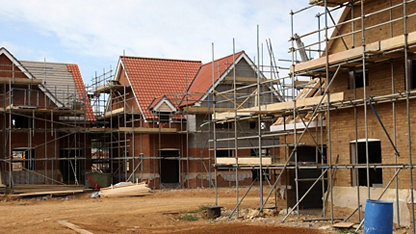The Government has released a white paper ‘Planning for the Future’ outlining proposals for the complete reform of the planning system in England a regime in place since 1947. Described as a discretionary system it comes with a lot of flexibility but also with a lot of uncertainty.
This uncertainty has created dissatisfaction among communities who do not know what to expect from their plan even after spending years having it approved. Likewise developers have expressed complete dissatisfaction about the uncertain outcome of development proposals.
Three Zones
Government now proposes to move from this discretionary system to a more prescriptive one based on three zones to be applied nationally: Protected Areas, Renewal Areas and Growth Areas. The intention is that land use plans are to be simplified and local plans should identify these three types of land. All land in a plan would be put into one of these three categories. Land for example identified as ‘growth areas’ would automatically have outline planning permission, reducing significantly the planning risk. Interestingly it also states that detailed matters for consideration should be principally a matter for professional planning judgment. Combining those two seems to suggest elected members are not involved in the decision making process of development management a change expected to raise considerable debate.
Three Pillars
The white paper expresses its intention as an attempt to rediscover the original mission of those who set out to improve the places people lived in late Victorian and early 20th century Britain. The white paper identifies three Pillars which bring focus to the purpose for which planning is being undertaken: Pillar One – Planning for Development; Pillar Two – Planning for beautiful and sustainable places; Pillar Three – Planning for infrastructure and connected places.
None of the changes proposed in these areas are without their advocates and opponents so we should expect vigorous debate. Recall the opposing forces during the evolution of the first National Planning Policy Framework 2012. But a simplified approach to levying developer contributions must receive universal welcome.
Three Initial Observations
- For a libertarian styled government these proposals seem quite centralising. It is not proposing measures that would be generated at local level and then applied prescriptively there. It seems more like a prescription originated in central government and administered by the local authority. Significant local authority discretion would seem to have been removed – part of the point - which is bound to generate some local heat.
- Land supply and the price at which it comes forward remains one of the thorniest issues in delivering new development particularly housing. There is a general implication in the white paper that the proposed measures will naturally result in land being made available. It is an expectation which is expressed alongside the desire to capture more land value uplift a contentious area which RICS is only too well aware of.
- The proposal to consolidate developer contributions into a single Infrastructure Levy looks like a return to the Community Infrastructure Levy’s original intention as a single development charge. This proposal would seem to avoid some of complexities introduced by the current regime and will be welcomed.
RICS contribution
Uncompetitive markets: Development land options is an area which government is keen to understand more about, as it seems an element of the market which is not readily visible. RICS will shortly do some work on land options and should be able to contribute to government’s understanding of the role these mechanism plays in the market.
Developer Contributions/Land value capture: RICS has been engaged with MHCLG in producing professional guidance to apply government’s current polices and practice advice. We will now review the completion of this work in the context of the timing of the new reforms and any transition periods Research has already been completed on ‘Land value capture’ and will be released shortly which will contribute to government’s understanding of potential policy initiatives
Placemaking: RICS will soon commence work on ‘Placemaking value and wellbeing’ based on five case studies following up on work we published on ‘Placemaking and value’ in 2016. This work was never more relevant than now following the verification of the relationship between poor environments and poor health outcomes.
There is much to commend in the reforms proposed by government but there is a long way to go between the giddy rhetoric of white paper aspirations and the mechanics of carefully calibrated language in legislation, regulations, policy and guidance to placate opposing stakeholders. And then there is the application in practice as the new regime is rolled out to the multiple local planning authorities in England.
Published date: 17 November 2020










